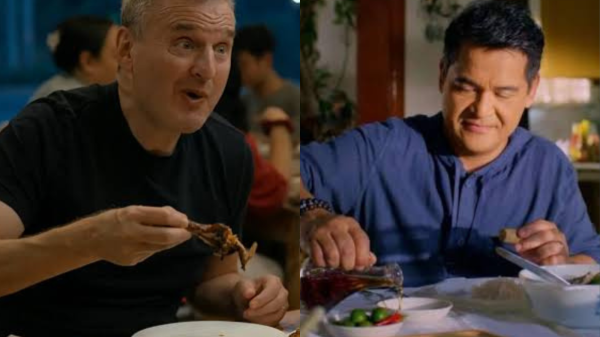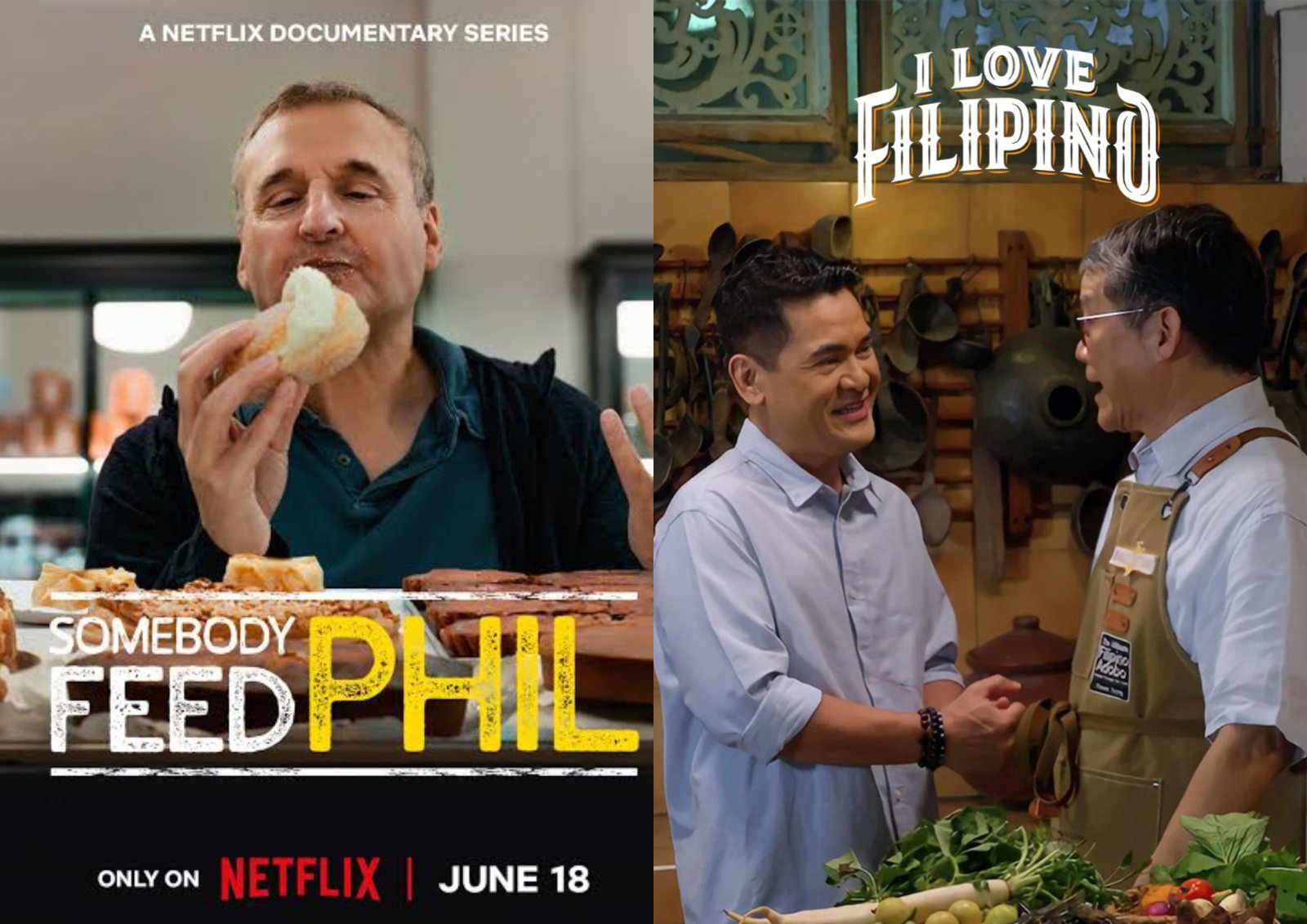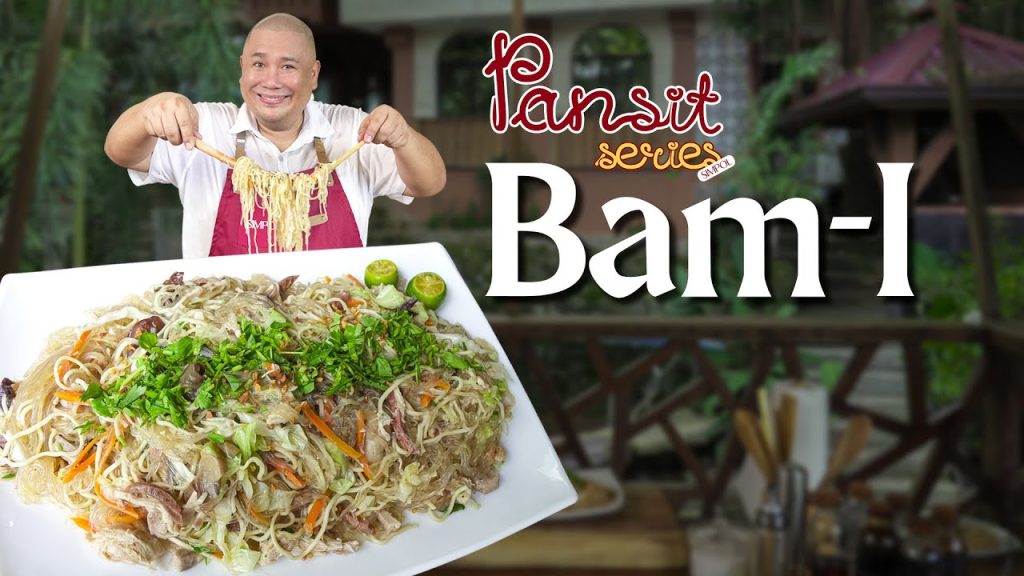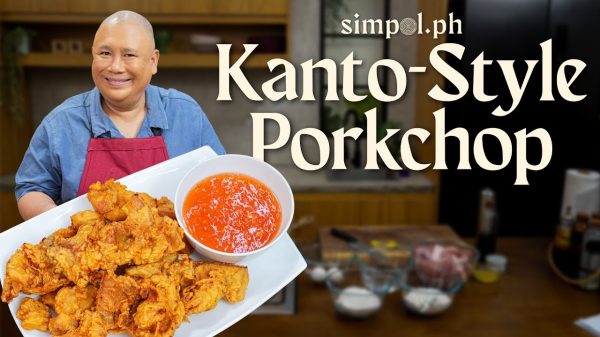Phil Rosenthal always has a funny way of saying things that seem off—until they make perfect sense.
Take this line from the Somebody Feed Phil Manila episode, now streaming on Netflix:
“Rice is like a napkin,” he quips during a seaside boodle fight at Pico de Loro. It sounds odd, but it lands. In the Philippines, rice isn’t just a side—it’s the foundation. It catches flavor, balances salt and spice, and holds meals together. It’s comfort on a plate.
The Manila episode of Somebody Feed Phil doesn’t just highlight food—it captures feeling. From kaldereta with jeepney drivers to a Bahay Kubo singalong at Toyo Eatery, the show offers a deeply personal look at Filipino culture. In the final scene, Chef Margarita Forés prepares a dinner that feels like a love letter—each dish layered with memory, meaning, and grace.
A Show That Made Us Feel
For many, though, the episode felt personal. Rosenthal’s gift isn’t performance—it’s presence. He doesn’t just host; he listens. Ige Ramos, food historian, captured it best:
“To be honest, I was on the verge of crying about five times… when they sang Bahay Kubo, when Phil lunched with the jeepney drivers at Sosings, when Wilma Doesnt proudly declared her roots… and when Margarita Forés made a cameo in the final scene. It was Gaita’s last supper, and the episode was dedicated to her.”
The pacing, the music, the restraint—it worked. The episode reminded us: food isn’t just cultural. It’s personal.
It’s worth noting that Somebody Feed Phil often features both local institutions and global flavors in every episode. In Manila, that role was filled by Asador Alfonso—Chef Chele González’s modern Spanish restaurant. The inclusion follows the show’s typical format, which often spotlights one international or fusion restaurant to reflect the city’s evolving, globalized food scene. Rather than dismiss it, we might also embrace this as part of our culinary heritage—one shaped not just by tradition, but by exchange, migration, and reinvention.
A Different Lens: I Love Filipino
Around the same time, Jiggy Manicad’s I Love Filipino aired—an earnest attempt to explore identity through food, culture, and history. It impressed visually but leaned toward formality, often lacking emotional resonance.
Some segments stood out—for better and worse. The claim that patis was a singular invention drew critique. Sherwin Felix of Locapedia noted:
“Patis is a byproduct of bagoong… Fermenting fish is a precolonial tradition. Maybe she was the first to brand it commercially—that I can accept.”
Another moment featured the claim that tapsilog was invented by one brand. While Tapsi ni Vivian helped popularize it, tapsilog was a community-born creation—emerging in roadside eateries in the late ’70s and ’80s.
The sisig segment, in particular, on both shows felt straight out of a promotions playbook. In I Love Filipino, Claude Tayag cites a 17th-century dictionary reference. Then in the Somebody Feed Phil Manila episode, Erwan Heussaff delivers the same line—almost verbatim. When food storytelling leans too heavily on scripted soundbites, it risks turning real, layered traditions into flat, pre-packaged narratives.
But the final episode—on Filipino architecture—shined. Anchored in the bahay kubo, it offered clarity and cultural depth. It proved the show’s potential when intent, voice, and structure align.

Lessons for Telling Our Story
Together, these shows offer a powerful reminder: how we tell our food story matters. If we want the world to understand what makes Filipino cuisine extraordinary, we must move beyond tropes and tidy narratives.
At Toyo Eatery, the shared singing of Bahay Kubo—paired with a thoughtful, emotionally resonant menu—showed what’s possible when sincerity and storytelling meet on the plate. Likewise, Chef Margarita Forés’ final dinner wasn’t just a meal—it was a narrative. Each dish carried memory, meaning, and care. These scenes worked because they led with feeling, not formula.
They remind us: creativity, vulnerability, and truth are essential Filipino ingredients.
Here’s what we take away:
-
Lead with emotional truth. People may forget the dish, but they’ll remember how it made them feel.
-
Make space for messiness. Real kitchens and imperfect stories have more heart than polished ones.
-
Context builds credibility. Heritage isn’t a monolith—it’s communal, layered, and ever-evolving.
-
Voice matters. Sometimes, one grounded voice tells a deeper truth than a chorus of soundbites.
-
Honor the ordinary. Some of our most powerful stories begin at the humble carinderia table.
In the flurry of reactions—tears, critiques, and praise—Pamela Lim Cinco of Risa Chocolate offered a quiet plea:
“Huwag na kayo manood kung pag-aawayan nyo lang… We are already so divided. Stop adding to it. Please.”
She wasn’t saying stop watching. She was asking us to watch with grace—to critique with care, and to remember the people behind the plates.
These shows don’t define us. But they remind us that food carries memory, identity, and power. And the real work begins after the credits roll—in our kitchens, in our conversations, and around the table.
These shows don’t define us. But they remind us: food carries memory, identity, and power. And the real work begins after the credits roll—in kitchens, in conversations, and around the table.
About the Shows
Somebody Feed Phil – Manila Episode and I Love Filipino are both streaming on Netflix. Each offers a distinct lens on Filipino culture—one emotional and intimate, the other structured and archival.























